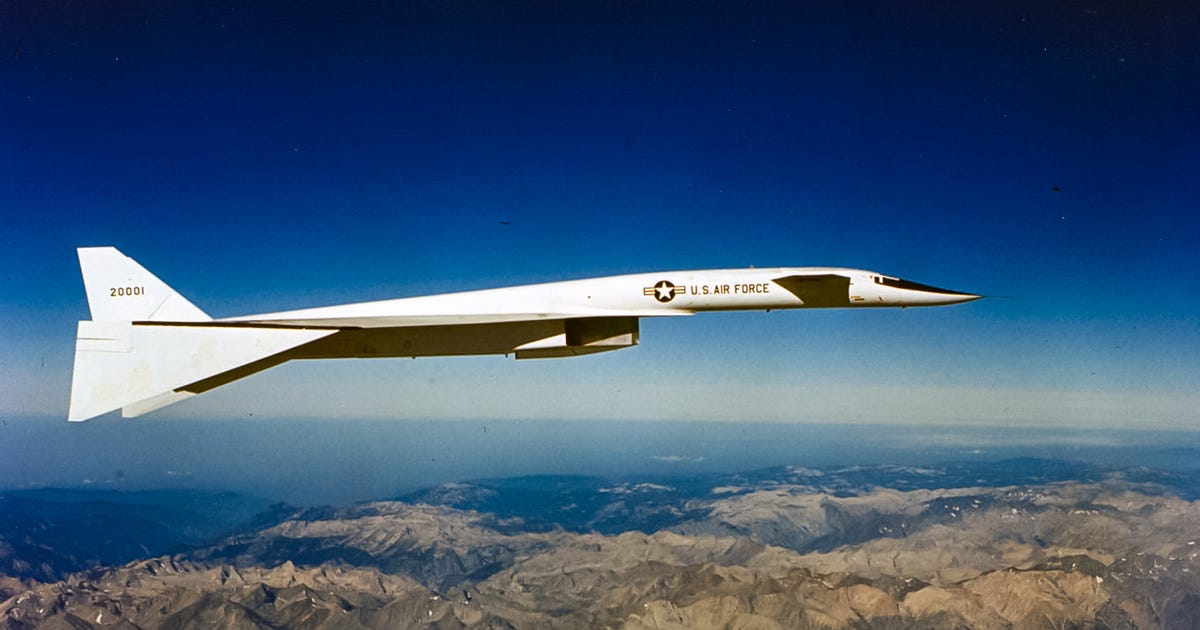
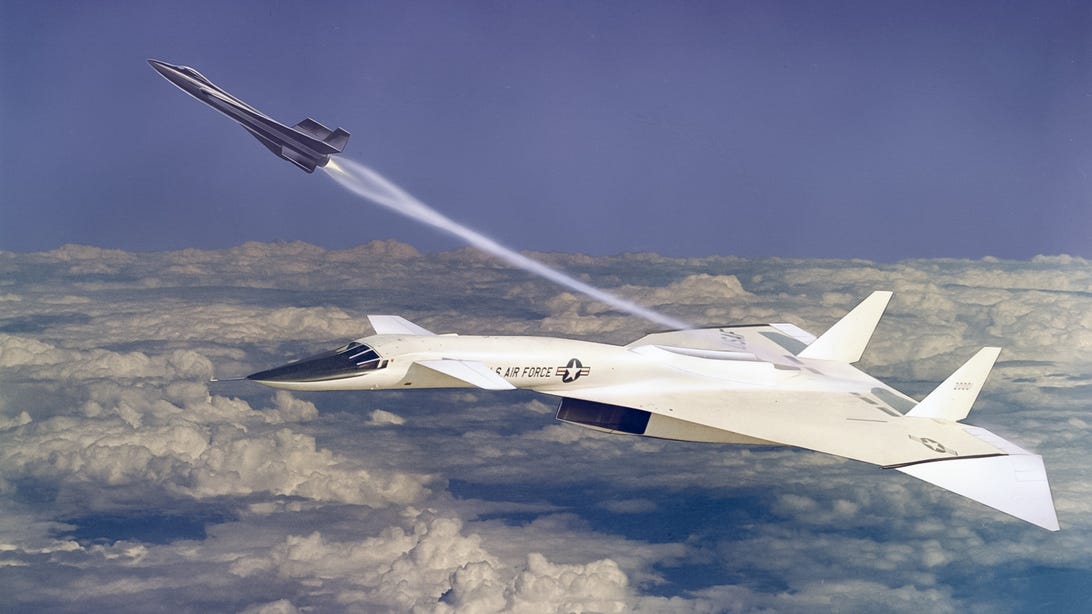
North American XB-70 Valkyrie
AFMC Place of work of Historical past
At Mach 3, you shuttle about 3,000 ft in step with 2d. That is over half of 1 mile (or 10 soccer fields). And at 70,000 ft, you might be two times as excessive as the typical airliner. Just a handful of airplane were able to each feats, and less may cruise very easily at each for a number of thousand miles.
Maximum had been stealthy reconnaissance airplane or engine-and-a-cockpit interceptors. The North American XB-70 Valkyrie used to be neither: It used to be an enormous strategic bomber able to wearing hundreds of kilos of nuclear guns at supersonic speeds. It first flew in 1964, quicker than just about each different airplane earlier than or since. It used to be additionally probably the most greatest and heaviest planes made, and it used to be out of date earlier than it even took flight.
This is the tale of the unbelievable, and just about forgotten, supersonic superbomber.
An Up-Shut Take a look at The united states’s Forgotten Supersonic Bomber
Pushing the envelope
At the beginning of the Chilly Struggle, the existing idea used to be that airplane had to fly upper and quicker to evade enemy airplane. Outrun them and fly upper, it used to be idea, and you might be necessarily invincible. The Valkyrie comes from my favourite technology in aviation, when bonkers design after bonkers design now not handiest made it off the strategy planning stage however to manufacturing.
The Air Pressure sought after a airplane that blended the payload of its then-new B-52 Stratofortress with the supersonic velocity of the B-58 Hustler. North American Aviation’s proposal used to be the XB-70, which used to be later named the Valkyrie after an Air Pressure contest. The designers driven the bounds of era to create an airplane that flew upper and quicker than any airplane its length ever had ever accomplished earlier than. Six massive Basic Electrical YJ93 delivered 28,800 kilos of thrust each and every and used afterburners. Although extremely inefficient at growing thrust at low velocity, at Mach 3 afterburners are one of the environment friendly tactics to do a supersonic cruise. The gasoline itself used to be used for cooling, one thing observed at the later (and quicker) SR-71 Blackbird.
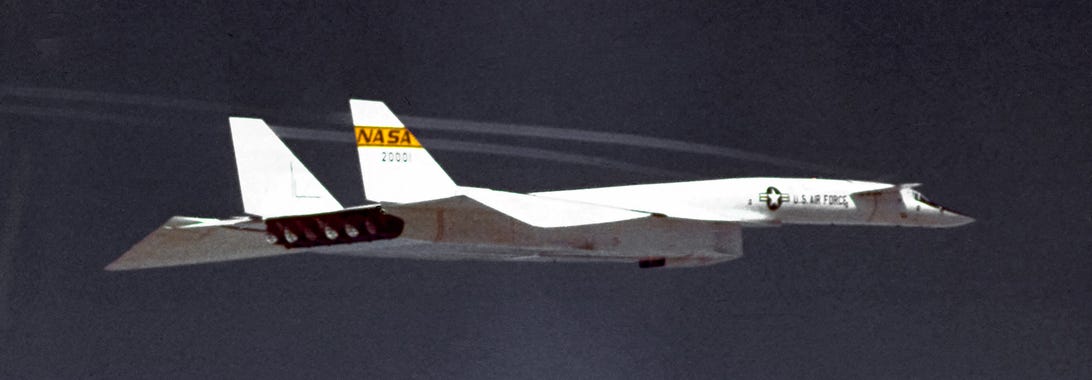
XB-70 in flight
NASA
The delta wings, a very good design for attaining supersonic speeds, would have adjustable wingtips. In conjunction with a artful wedge air consumption and different design parts, they might permit the XB-70 to “take a seat” by itself shockwave, decreasing drag and turning in carry. It used light-weight and powerful state-of-the-art fabrics like titanium and brazed stainless-steel honeycombs.
With a best velocity of Mach 3 and a cruising altitude of over 70,000 ft, the XB-70 used to be designed to be too rapid and too excessive for any Soviet airplane to intercept. The Valkyrie additionally spurred engineers to ascertain a outstanding XB-70-influenced long run. Concepts incorporated the use of it as a high-speed orbital release platform, as a mothership for different airplane or even as a supersonic delivery. With a proposed 80 to 107 passengers and a 4,000-mile fluctuate, it could elevate about as many passengers because the Concorde but used to be just about two times as rapid.
Nemesis of the Valkyrie
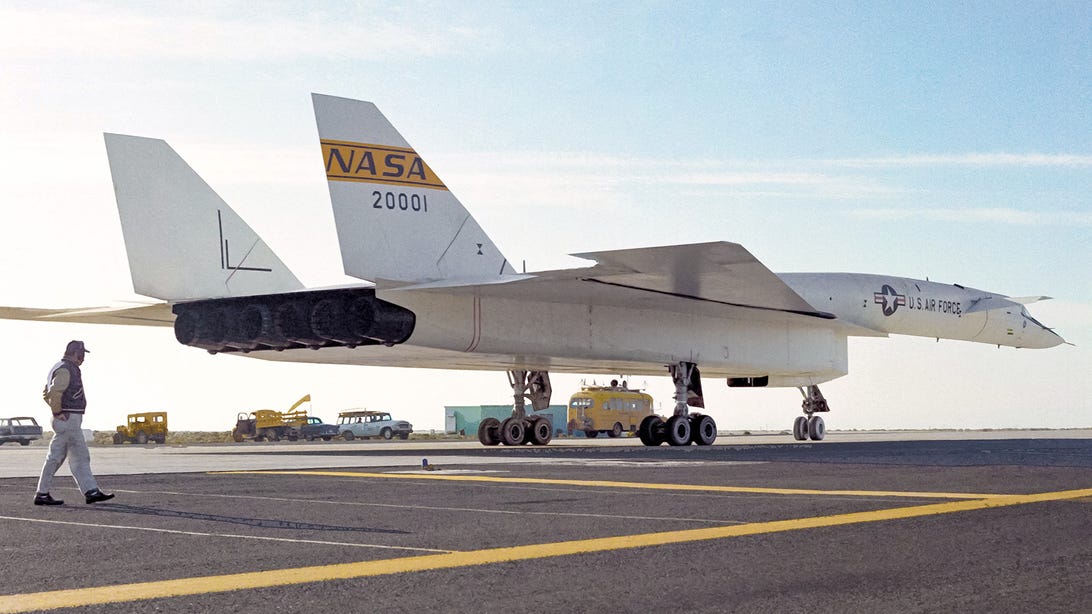
XB-70 at the tarmac
NASA
In any case, it wasn’t the specter of any airplane that ended the XB-70 program. Via the Valkyrie’s 1964 first flight, the Soviet Union have been construction its S-75 Dvina surface-to-air missile machine for seven years. It greater than matched the XB-70’s velocity and altitude efficiency.
Even at house, a rising selection of army brass knew the longer term wasn’t in long-range manned bombers however ICBMs. Whilst the primary era of Titan and Atlas missiles had important problems as dependable nuclear deterrents, their successors had been advanced. By the point the XB-70 had flown, each Titan II and Atlas had been smartly on their strategy to changing into unswerving release cars for each army and civilian use. They might proceed in the ones roles for many years. The will for a pricey supersonic bomber to fly long-range missions into the USSR had turn out to be a factor of the previous.
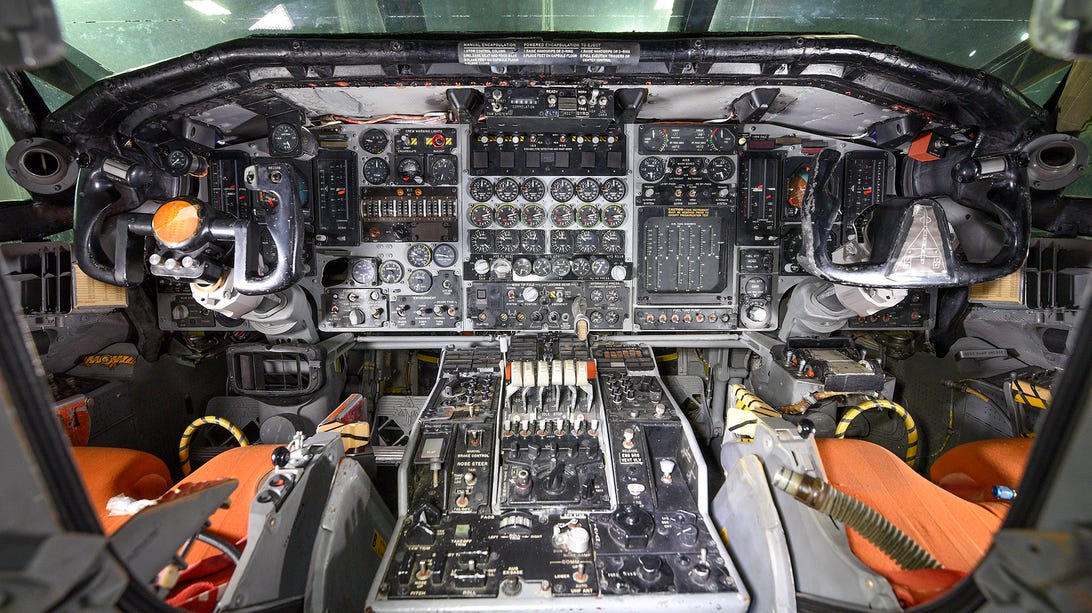
XB-70 cockpit
NMUSAF/Ken LaRock
President John F. Kennedy canceled this system as a protection challenge in 1961, however that wasn’t the top of the Valkyrie. NASA wanted a big supersonic airplane to check concepts for a possible American supersonic delivery to compete in opposition to Concorde and the Soviet Tu-144. The distance company examined the primary XB-70 constructed and helped North American make adjustments to the second one airplane, which used to be extra strong and higher succesful at excessive velocity. The knowledge accrued proved helpful, regardless that it used to be satirically in serving to to cancel the American SST program.
This 2d Valkyrie did the vast majority of the Mach 3 fights, however unfortunately it used to be fascinated with a sad midair collision. Right through a 1966 photoshoot asked by way of GE, an F-104 Starfighter flown by way of NASA pilot Joe Walker were given too as regards to the Valkyrie’s proper wingtip. It flipped the F-104 excessive of the bomber, getting rid of either one of the XB-70’s vertical stabilizers and killing Walker right away. The Valkyrie flew for a couple of extra seconds earlier than coming into an unrecoverable roll. Pilot Al White ejected and survived regardless of critical accidents; co-pilot Carl Go wasn’t in a position to eject and died.
Closing flight of the Valkyrie
Via the past due ’60s, the extra state-of-the-art YF-12 and SR-71 a ways outclassed the unique XB-70, and each had been way more helpful as analysis airplane. The lack of the second one, extra succesful XB-70 additional lowered its usefulness.
On Feb. 4, 1969, the primary and handiest last XB-70 flew its closing flight. It had logged simply over 160 hours of flight time, little or no of that at its a lot lauded best velocity. From Edwards Air Pressure Base in California, it flew to Wright-Patterson AFB in Ohio and used to be towed on public roads to the Nationwide Museum of america Air Pressure, the place it’s lately.
The Analysis & Construction Gallery on the Nationwide Museum of the Air Pressure has an out of this world selection of uncommon and putting prototype airplane, however all take a seat within the shadow of the Valkyrie. Actually, it is that massive. The pointy angles glance in contrast to anything else from its day, or now. It is the long run informed by way of proper angles and razor edges. The curves of the Lockheed YF-12A glance undoubtedly unfashionable compared.
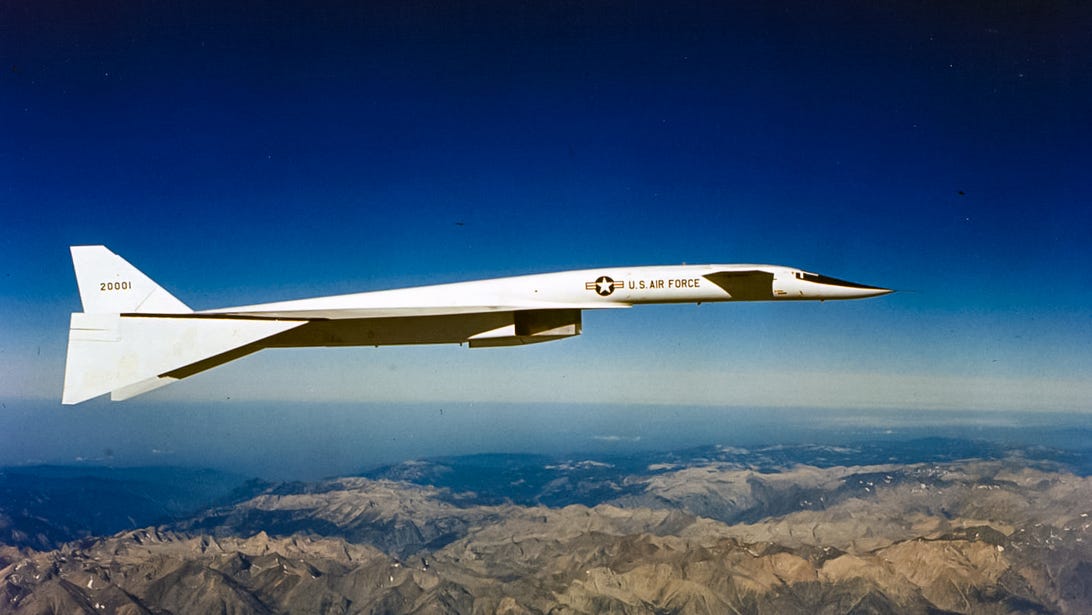
USAF
Regardless of by no means firing a weapon in anger and handiest flying for 5 years, the Valkyrie supplied hints of what used to be to come back in airplane design. More than one corporations copied, or had been no less than influenced by way of, the XB-70 of their entries for an American supersonic delivery. You can also see echoes of the Valkyrie’s form within the B-1 Lancer, constructed by way of then-North American Rockwell. That airplane continues to be in provider.
According to the XB-70’s perceived danger, the Soviets evolved probably the most quickest interceptors ever: the MiG-25. Whilst extremely improper, its successor MiG-31 continues to be in provider.
The XB-70 Valkyrie epitomizes early Chilly Struggle aviation. It used to be a wild design that driven the bounds of efficiency and era. However regardless of its velocity, it could not stay alongside of the days. Much less spectacular, however extra flexible designs from the technology a ways outlived the XB-70 — now not least the B-52, which first flew in 1955 and can be in provider in 2055.
However as a glimpse at that Jet Age long run promised within the Nineteen Fifties, it is unbelievable. Take a look at the gallery above for a lot extra pictures of the Valkyrie then and now.
In addition to protecting TV and different show tech, Geoff does photograph excursions of cool museums and places around the globe, together with nuclear submarines, huge airplane carriers, medieval castles, epic 10,000 mile street journeys, and extra. Take a look at Tech Treks for all his excursions and adventures.
He wrote a bestselling sci-fi novel about city-size submarines, together with a sequel. You’ll be able to observe his adventures on Instagram and his YouTube channel.
Get the CNET Culture newsletter
Explore movies, games, superheroes and more with CNET Culture. Delivered Tuesdays and Fridays.
